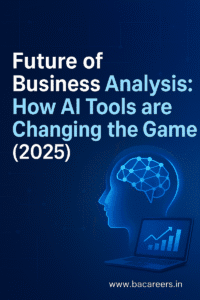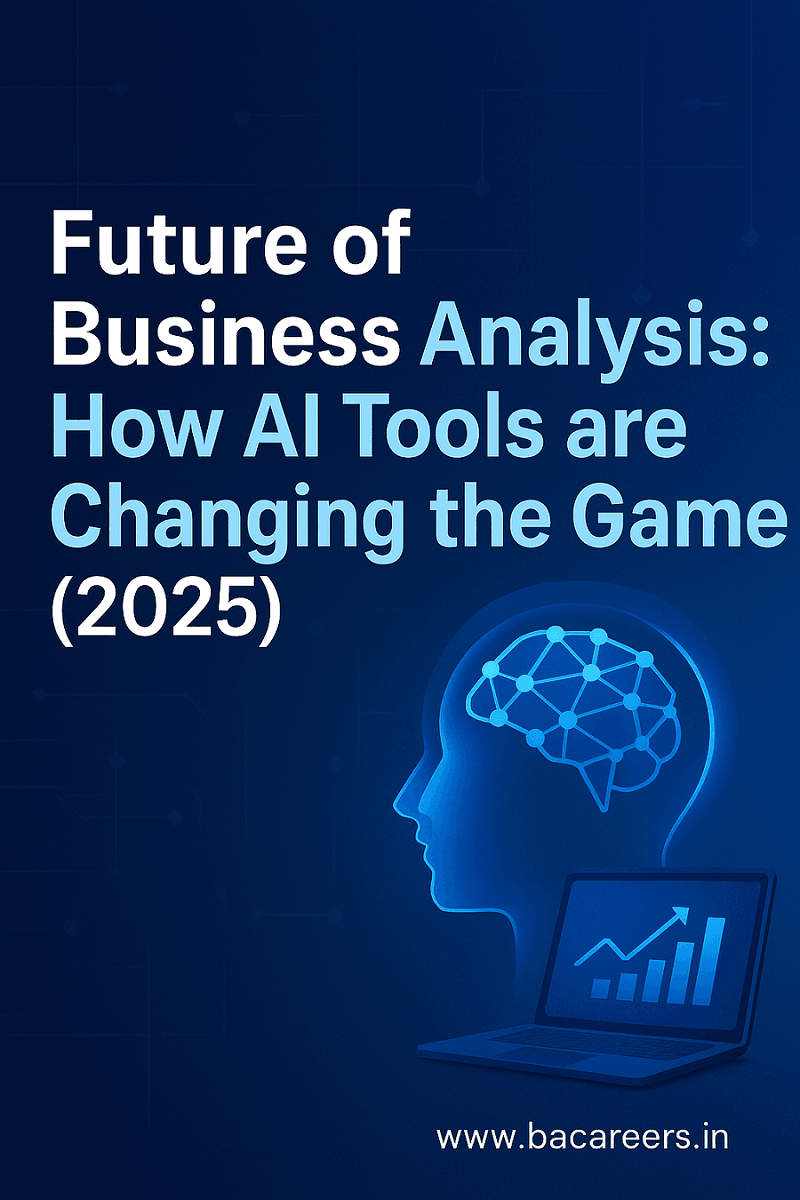Introduction: The AI Shift in Business Analysis
Are you tired of juggling endless spreadsheets and struggling to extract meaningful insights for your business? What if there was a smarter, faster, and more precise way to analyze data?
That’s exactly where AI tools revolutionizing business analysis workflows come into play. Artificial Intelligence isn’t just helping business analysts — it’s redefining how they interpret data, make strategic decisions, and deliver business value.
In 2025, AI has become a core driver of business transformation, empowering analysts to predict market trends, identify risks early, and support more data-driven strategic planning.

The Old Way vs. The AI Way
Traditional Business Analysis Challenges
Before AI, business analysis relied heavily on manual data gathering, Excel models, and static reports. Analysts spent hours cleaning data, reconciling inconsistencies, and trying to make sense of fragmented information.
Common Pain Points:
Time-consuming manual data entry and report generation
High chances of human error
Limited capacity to predict trends or patterns
Delayed decision-making due to slow analysis cycles
For example, a Business Analyst in a retail company might spend days analyzing monthly sales data to understand customer preferences — only to find the insights outdated by the time they reach stakeholders.
Enter AI: The “Aha!” Moment
AI eliminates these bottlenecks. Modern AI tools like Power BI with Copilot, Tableau GPT, and IBM Watson Analytics can automatically analyze vast datasets, detect anomalies, and even generate insights in plain language.
Immediate Benefits:
Faster data processing and real-time insights
Improved accuracy through machine learning
Automated reporting and trend prediction
More time for analysts to focus on strategic thinking
💡 Real-World Scenario:
A Business Analyst in an e-commerce company uses AI-based predictive analytics to identify which products are likely to trend next month. Instead of analyzing sales data manually, the system highlights patterns and suggests promotional strategies — saving days of effort.
AI-Powered Data Interpretation
From Raw Data to Actionable Insights
AI tools go far beyond traditional dashboards. They not only visualize data but also explain what’s happening and why, often recommending actions.
For instance, Google Cloud’s AutoML and Microsoft Azure Machine Learning help Business Analysts perform predictive analytics without deep technical expertise.
Predictive Analytics and Anomaly Detection
Predictive AI algorithms use past data to forecast future trends, while anomaly detection identifies unusual patterns — helping businesses respond before problems escalate.
Example:
A Business Analyst in the banking sector might use AI tools to spot irregular customer transactions that could indicate fraud. Instead of manually filtering thousands of records, the AI flags anomalies instantly for investigation.
Case Study: Discovering Market Opportunities
Imagine a telecom company using an AI-driven analytics platform. The system detects that a particular region shows rising mobile data usage but limited high-speed plan adoption. The analyst recommends launching a targeted campaign — capturing new revenue opportunities the human eye might have missed.
Revolutionizing Strategic Planning
AI in Scenario Planning and Risk Assessment
AI doesn’t stop at analyzing data — it now informs strategic decision-making. By simulating multiple “what-if” scenarios, analysts can evaluate outcomes before making major business moves.
Example:
A Business Analyst in a manufacturing firm uses AI models to simulate supply chain disruptions. The tool predicts potential delays and recommends alternate suppliers, minimizing operational risks.
Competitive and Market Intelligence
AI tools can also track competitor moves, pricing changes, and customer sentiment from online data sources.
Tools like Crayon, AlphaSense, and ChatGPT-powered analytics platforms help Business Analysts synthesize this information into insights that influence executive strategy.
📊 Scenario:
A Business Analyst in an FMCG company uses AI to track competitor social media mentions. The analysis reveals that a rival’s product is facing quality issues, prompting a timely marketing campaign emphasizing the company’s superior quality.
The Future of the Business Analyst
Will AI Replace Business Analysts?
Absolutely not. AI is a co-pilot, not a replacement. While AI handles repetitive tasks and complex calculations, human analysts bring context, creativity, and emotional intelligence — qualities machines can’t replicate.
The Evolving Role: From Data Wranglers to Strategic Advisors
The modern Business Analyst’s role is shifting from “data handler” to strategic advisor. They now interpret AI-generated insights, validate them against business goals, and drive actionable decisions.
Key Future Skills for Business Analysts:
Understanding AI and machine learning basics
Data interpretation and visualization
Critical thinking and storytelling with data
Business acumen and stakeholder management
🔍 Tip: Explore certifications like IIBA’s CBDA (Certification in Business Data Analytics) to strengthen your AI-driven analysis skills.
(Source: IIBA.org)
Getting Started with AI for Business Analysis
If you’re a Business Analyst or aspiring to become one, integrating AI into your workflow is easier than you think.
Step-by-Step Approach:
Start Small – Use built-in AI assistants in tools like Power BI, Tableau, or Excel Copilot.
Explore Predictive Platforms – Try AI tools like DataRobot or Google Cloud AutoML for deeper insights.
Collaborate with Data Teams – Work with data scientists to understand AI outputs and integrate them into business strategies.
Upskill Continuously – Learn AI basics, prompt engineering, and data visualization techniques.
Accessible AI Tools for Business Analysts:
Microsoft Power BI with Copilot – AI-driven dashboard generation
Tableau GPT – Conversational insights
ChatGPT (OpenAI) – For requirement analysis and documentation
Google Looker Studio – For AI-powered reporting
IBM Watson Studio – For predictive and prescriptive analytics
🎯 Call to Action:
Embrace AI now — because analysts who understand how to leverage these tools will lead the next generation of digital transformation.
Related Articles :
Conclusion: The New Era of Business Analysis
AI is not a passing trend — it’s the future of business analysis. From automating repetitive tasks to delivering deep strategic insights, AI tools are empowering Business Analysts to become the architects of smarter, faster, and more data-driven organizations.
The key lies in embracing AI as an enabler, not a threat. The analysts who learn to harness AI effectively will define the success stories of tomorrow’s businesses.

Business Analyst , Functional Consultant, Provide Training on Business Analysis and SDLC Methodologies.

